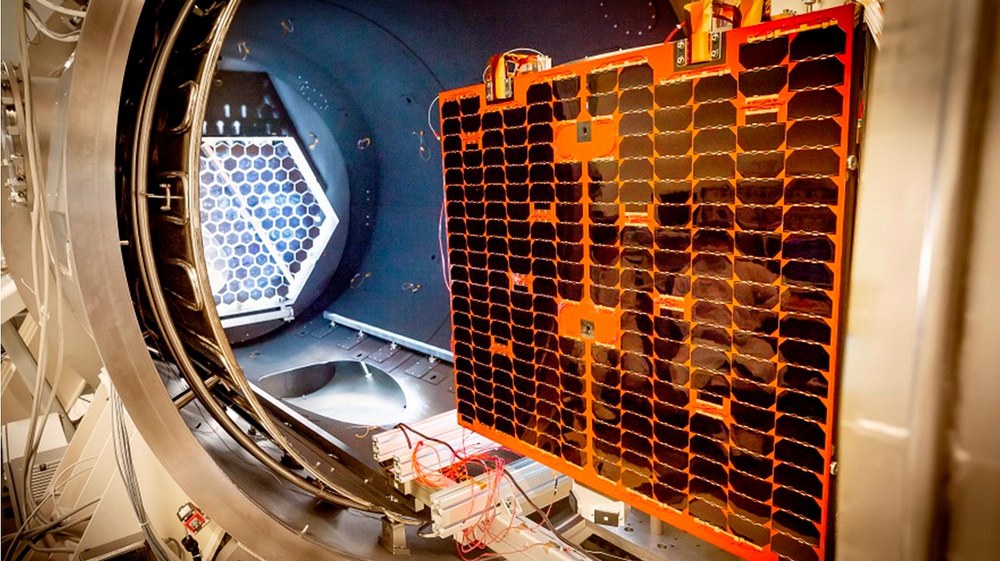Space Simulation Facility (WSA)


Individual components and entire systems of space applications alike undergo thermal vacuum testing at this large-scale facility run by the DLR Institute of Space Systems in Bremen. The goal of this facility is to assist with design processes for space components and thermal control systems.
Space-like conditions
This simulation facility of the German Aerospace Center (Deutsches Zentrum für Luft- und Raumfahrt; DLR) replicates the environmental conditions experienced by space missions, including high vacuum, the cold backdrop of space, ambient temperatures of other celestial bodies and solar radiation. The thermal wall built into the WSA, together with the four gas mixing systems, offer the possibility to control each segment separately and to set temperatures of 90–400 Kelvin, equivalent to –183 to +127 degrees Celsius.
Seven xenon headlights simulate the solar radiation that a spacecraft would be exposed to in orbit. The test object can be irradiated with up to 1400 watts per square metre (the solar constant, or mean solar electromagnetic radiation per unit area) and with a light beam diameter of one metre.
A special test setup also enables ascent simulations using hardware components, in order to investigate their behaviour during rapid depressurisation. A pressure drop of up to 50 millibars per second makes it possible to closely simulate the ascent of most launchers. Video recordings during depressurisation are used in further analyses to optimise the features that are essential for ascent.
